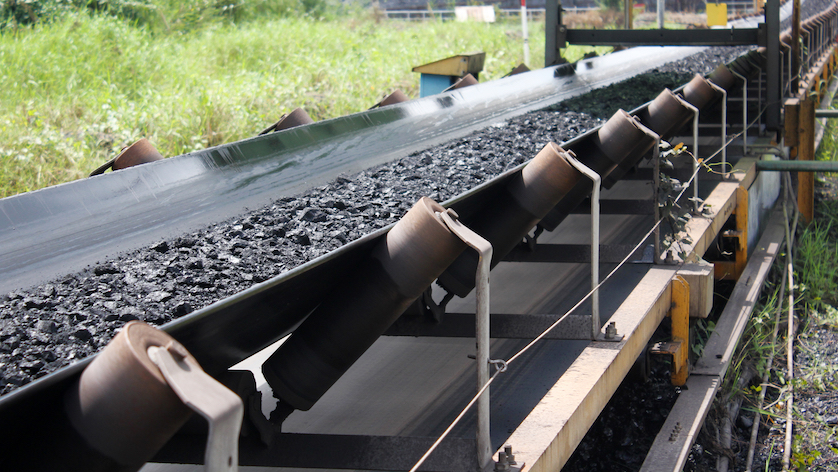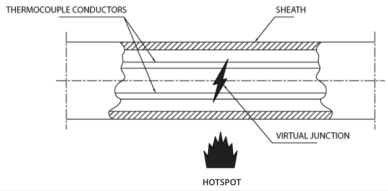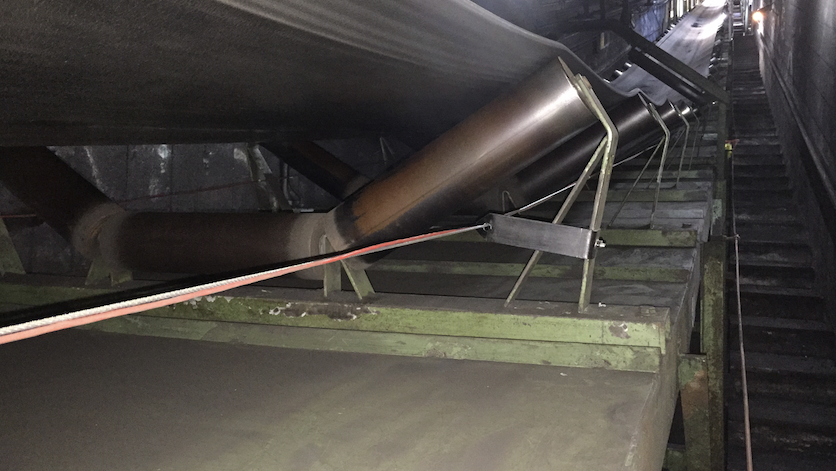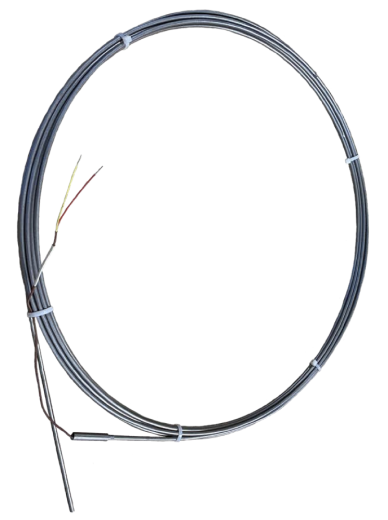
Fires are a real risk when transporting coal on a conveyor belt – endangering lives, equipment, and products. Rugged, reliable, and cost-effective, WIKA’s model TCC continuous thermocouple plays an important role in preventing and detecting coal conveyor belt fires.
Any time an industrial conveyor belt is moving, it is inevitable that some loose materials will bounce off and get stuck between the belt and the rollers. If the material is sand or grain, the most serious consequence is that the rollers would seize up. But when the conveyor belt is transporting coal, then any lumps and particles that accumulate between moving parts will undergo friction and generate heat.
The ignition temperature of bituminous coal is 572°F (300°C), and 752°F (400°C) for semi-anthracite coal. Any coal reaching those temperatures will produce sparks, a dangerous situation that could result in a fire that would spread and, if not stopped in time, destroy the conveyor and its supports.
A variety of technologies are used to detect the hotspots that lead to conveyor fires. The best fire prevention system is one that is reliable, accurate, low maintenance, and cost effective. Linear temperature sensors, such as continuous thermocouples, meet all three criteria.
Temperature Monitoring of Coal Conveyors
By the time a fire starts under a conveyor belt, the entire infrastructure – not to mention personnel – is endangered. What’s needed is a system that detects and warns of hotspots, which indicate areas where the temperature is nearing coal’s ignition point.
One challenge of temperature monitoring of coal conveyors is that the equipment is very long. It’s not practical to install surface temperature sensors or multipoint thermocouples underneath the entire length of the belt, which can span several miles. Some facilities use infrared (IR) line scanners, but this technology has distinct disadvantages:
- Needs direct sight lines, which means it cannot detect hotspots behind barriers
- Requires expensive technology and devices in the $50,000–$100,000 range
- Shows a temperature distribution, which is not very precise
- Has highly sensitive electronics that do not stand up well to sand, dust, and other particulates
- Usage in high ambient temperatures often results in reduced reliability, performance issues, and shorter operating life
Other fire detection systems include fiber optics, gas sensors, flame sensors, smoke sensors, graphene oxide (GO)-based sensors, and even artificial intelligence (Khan et al., “Recent Advances in Sensors for Fire Detection,” Sensors (Basel), Apr. 26, 2022). But the most rugged, reliable, simple, and cost effective fire-prevention system for coal conveyors is the continuous thermocouple.
Reliable Fire Detection with Continuous Thermocouples
Operators of coal conveyor belts want to take action long before a fire can start. This requires the ability to detect elevated temperatures (hotspots) along the entire length of the belt. A continuous thermocouple is an elegant solution that consists of a single cable installed under the belt, where coal can get caught in the rollers. As opposed to standard thermocouples with a single measuring point (hot junction) where the two conductor wires meet, a continuous thermocouple creates a virtual junction at the point of the highest temperature, wherever that may be.

A linear temperature sensor is made up of two thermocouple conductors imbedded within mineral insulation that acts as a semiconductor. Rising temperatures, such as with a hotspot, creates a virtual junction that provides an mV output proportional to type K thermocouples. (click to enlarge)
Principle behind continuous thermocouples
A continuous thermocouple linear sensor, like WIKA’s model TCC, is made up of two type K thermocouple conductors in parallel and imbedded within a specially made mineral insulation. Surrounding that is a stainless steel sheath. The mineral oxide acts as a semiconductor with negative thermal efficient. The resistance of the insulation drops as the temperature rises, thereby creating a temporary hot junction. This “virtual junction” provides the mV output proportional to type K thermocouples. The TCC can be used with most modern transmitters, such as the T16 digital temperature transmitter or the T38 digital temperature transmitter with HART® protocol (FM approval pending).
The linear sensor provides live updated readings based on the hottest temperature at any given time. Up to two alarms can be set. For example, in one coal power plant where WIKA installed this fire detection system, the low setting is at 140°F (60°C) and the high setting at 176°F (80°C). The temperature points will differ depending on the type of coal and its characteristics. Continuous thermocouples are self-restoring, which means the measurement will update even when the hotspot location changes.
The standard length of the TCC is 100 feet (30m). This means that for longer conveyor belts, the belt is divided into zones, with a continuous thermocouple and transmitter per zone. Note that the system cannot pinpoint where along the cable the hotspot is; the transmitted signal indicates only that a hotspot exists somewhere in that zone. When operators receive an alarm, they typically go to that zone (depending on how accessible it is), find the hotspot with a pyrometer, and use a hammer to break up the stuck coal lump that’s creating friction.

Model TCC linear temperature sensor (reddish cable) installed beneath a coal conveyor belt and rollers to detect hotspots
Advantages of the Model TCC

Model TCC linear temperature sensor for hotspot detection
WIKA’s model TCC is a specially engineered temperature sensor that’s custom made for each coal conveyor and installed during a scheduled downtime or turnaround. It takes 1–3 weeks to manufacture the necessary thermocouple lengths, and then a few days to a week to mount the cables.
Our customers choose the TCC for its many advantages:
- Stable signal
- Real-time continuous temperature measurement
- Fast response time
- Self-restoring
- Maximum operating temperature: 752°F (400°C)
- Maximum working temperature: 1,650°F (900°C)
- Accuracy within ±6°F (±3°C)
WIKA, Custom Temperature Solutions for Power Generation
In addition to coal conveyors, the TCC is used to monitor pipelines and to detect refractory failure in refractory-line reactors. This unique solution for linear temperature sensing is also found in biomass plants that burn wood and wood processing waste (wood chips, sawdust, etc.), which has a much lower ignition temperature than coal. For expert advice on retrofitting fuel conveyor belts with a rugged and reliable fire prevention system, contact WIKA USA.
Products mentioned in this article:
• Model TCC linear sensor for hotspot detection
• Model T16 digital temperature transmitter
• Model T38 digital temperature transmitter with HART® protocol

